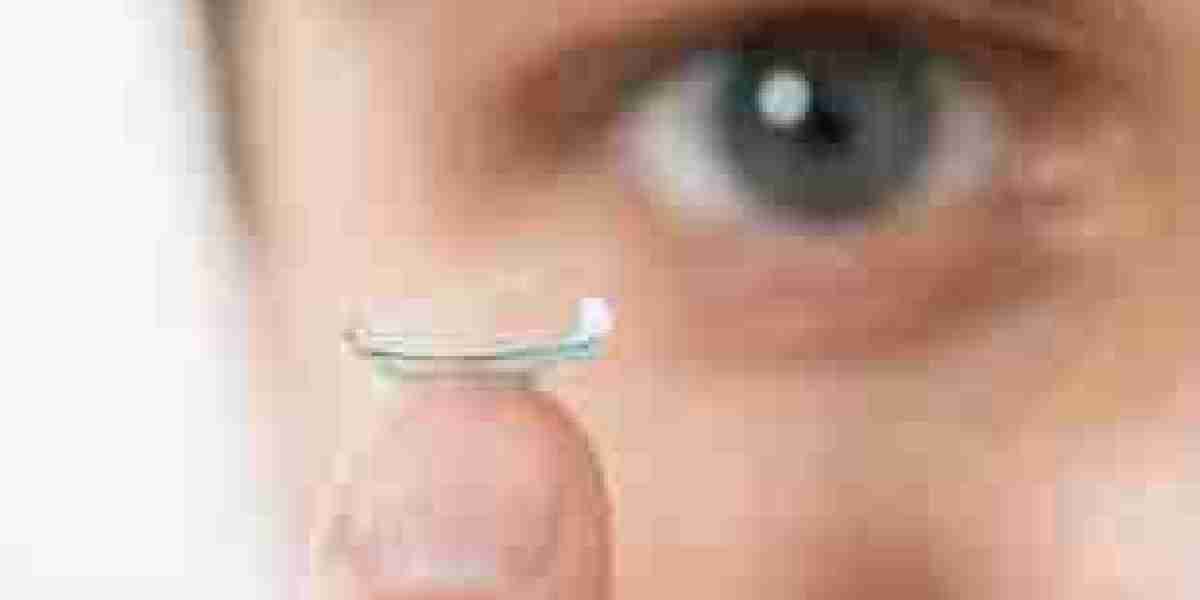The global contact lens solutions market is undergoing significant transformation, driven by technological advancements and evolving consumer preferences. As the demand for contact lenses rises due to increasing vision correction needs and lifestyle choices, the accompanying market for lens care solutions is poised for substantial growth. Innovations in product formulations, sustainability initiatives, and personalized care are reshaping the industry landscape.
Market Growth and Outlook
In 2025, the contact lens solution market is projected to be valued at approximately USD 1.91 billion, with expectations to reach USD 2.90 billion by 2035, growing at a CAGR of 4.3% . This growth is fueled by the increasing adoption of contact lenses for both vision correction and cosmetic purposes, particularly among younger demographics and in emerging economies.
Emerging Technologies Driving Innovation
1. Multi-Purpose Solutions (MPS): MPS have become the preferred choice for many contact lens users due to their convenience, combining cleaning, disinfecting, rinsing, and storage functions into a single solution. Products like Bausch + Lomb's Biotrue and Alcon's Opti-Free Puremoist not only clean effectively but also mimic natural tears to enhance comfort for extended wearers .
2. Hydrogen Peroxide-Based Solutions: These solutions offer a preservative-free alternative, providing deep cleaning and disinfection, making them suitable for users with sensitive eyes. Their ability to break down protein deposits and eliminate microorganisms without the use of preservatives addresses concerns about allergic reactions and eye irritation .
3. Antimicrobial Properties: Innovations incorporating antimicrobial agents into contact lens solutions are enhancing safety by actively combating harmful bacteria, fungi, and viruses. This development is particularly significant in reducing the risk of eye infections, a primary concern among contact lens wearers .
4. Smart Lens Technology: The integration of smart technology into contact lenses is an emerging frontier. Smart lenses equipped with sensors can monitor various metrics such as hydration levels and environmental factors, relaying information to connected devices. This data-driven approach allows users to make informed decisions about lens care and overall eye health .
Consumer Preferences Shaping Market Dynamics
1. Demand for Preservative-Free Formulations: A growing segment of consumers is seeking preservative-free contact lens solutions to minimize the risk of allergic reactions and eye irritation. Manufacturers are responding by developing gentle formulations that cater to sensitive eyes, enhancing user comfort and compliance .
2. Eco-Friendly and Sustainable Packaging: Environmental consciousness is influencing purchasing decisions, with consumers favoring products that utilize recyclable materials and biodegradable packaging. Companies are adopting sustainable practices, such as refillable dispensers and plant-based packaging, to reduce their environmental footprint and appeal to eco-conscious customers .
3. Customization and Personalization: The trend towards personalized healthcare is evident in the contact lens solutions market. Innovations are enabling users to select solutions tailored to their specific eye conditions, such as dryness or sensitivity. Additionally, smart solutions that provide feedback on lens health and usage patterns are promoting better hygiene practices and overall eye health .
Regional Insights
North America: The region holds a significant share of the contact lens solutions market, driven by advanced healthcare infrastructure, high disposable incomes, and a strong presence of key industry players. The U.S. market, in particular, is experiencing growth due to increasing vision impairment rates and a preference for contact lenses over traditional eyewear .
Asia Pacific: Emerging economies like India and China are witnessing rapid market expansion, attributed to rising urbanization, increased awareness of eye health, and growing adoption of contact lenses among the youth. The availability of e-commerce platforms is further enhancing accessibility to contact lens solutions in these regions .
Challenges and Opportunities
1. Cost Barriers: The high cost of specialized contact lens solutions can be a deterrent for some consumers, particularly in developing regions. Affordability remains a challenge, necessitating the development of cost-effective solutions without compromising on quality .
2. Regulatory Compliance: Stringent regulations concerning preservatives and antimicrobial agents require manufacturers to ensure product safety and efficacy. Compliance with these regulations is essential to maintain consumer trust and market credibility .
3. Environmental Concerns: The push for sustainability presents both challenges and opportunities. While eco-friendly initiatives may increase production costs, they also offer a competitive advantage by aligning with consumer values and environmental responsibilities .
Conclusion
The contact lens solutions market is evolving rapidly, influenced by technological innovations and shifting consumer preferences. The emphasis on multi-purpose, preservative-free, and eco-friendly solutions reflects a broader trend towards convenience, safety, and sustainability. As the market continues to grow, companies that prioritize innovation and align with consumer values are poised to lead in this dynamic industry landscape.




